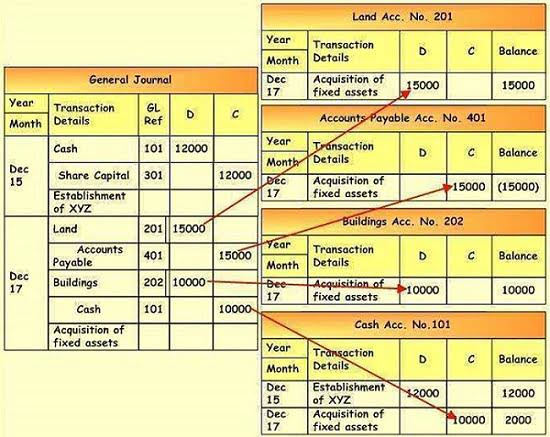
Revenue is all income generated by the sale of the business’ primary goods or services. Revenue may also be referred to as the “top line,” because it is the first line on the income statement. While an Income statement is vital for the business, it should be noted that an Income statement is just one of income statement accounts the three financial statements. Income statements are an essential part of a company’s financial reporting. The income statement is also vital for ratio analysis, equity research, and valuation of the company. Gains represent all other sources of income apart from the company’s main business activities.
What is the difference between an income statement and a balance sheet?
- As an essential ingredient in financial forecasting, pro forma statements let you try on the future for size—and see which business moves are the right fit for you.
- By examining industry performance, the reader will get the complete picture and make decisions accordingly.
- EBITDA is not normally included in the income statement of a company because it is not a metric accepted by Generally Accepted Accounting Principles (GAAP) as a measure of financial performance.
- Together, these financial statements attempt to provide a more clear picture of a business’s financial standing.
- For lean startups still fine-tuning their technology and attracting venture capital, temporarily operating at a loss may not be a bad thing.
The following summarizes and explains the items found in an income statement. Learning how to read and understand an income statement can enable you to make more informed decisions about a company, whether it’s your own, your employer, or a potential investment. The multiple-step format contains several subgroups of revenues, expenses, and a separate section for ordinary gains and losses. The single-step format lists all the revenues and ordinary gains and then deducts all the expenses and ordinary losses involved in calculating ordinary incomes. Learn how to read income statements, and you’ll unlock the ability to understand your finances.
What Are Financial Statements?
It provides insights into a company’s overall profitability and helps investors evaluate a company’s financial performance. Directors and executives are also provided a clear picture of the performance of the company as a whole during a specific accounting period. EBIT is helpful when analyzing the performance of the operations of a company without the costs of the tax expenses and capital structure impacting profit. Non-operating items are further classified into non-operating revenue and non-operating expenses. The Internal Revenue Service (IRS) permits businesses to deduct operating expenses if the business operates to gain profits.
- Revenue realized through secondary, noncore business activities is often referred to as nonoperating, recurring revenue.
- In response to the second weakness, accountants gather and report information about the effects of the various types of changes in owners’ equity throughout the year.
- Nonprofit entities use a similar but different set of financial statements.
- Receipts are the cash received and are accounted for when the money is received.
- 11 Financial may only transact business in those states in which it is registered, or qualifies for an exemption or exclusion from registration requirements.
- An income statement shows a company’s revenue and expenses for a period of time.
Revenue and Gains
Similarly, an airline’s decision to stop serving three cities would stand because the same general group of customers would still receive service. In a subsequent interpretation, the AICPA provided a series of examples of situations to be included or excluded as discontinuances. The company anticipates selling its remaining 16.75% interest for approximately https://www.bookstime.com/ $10,400,000 in interest-bearing notes. The following example illustrates the reporting of an unusual gain expected to recur. On the other hand, an event that the management can control, such as selling an unusual investment, can be deemed extraordinary. For example, assume that a company sells an asset with a book value of $800 and receives $1,000.

- Income statements help business owners discover if they can generate profit by increasing revenues, decreasing costs, or a combination of both.
- However, once you know what to look for, you’ll be able to use it to make decisions for your business.
- The income statement serves as a tool to understand the profitability of your business.
- In the example above, operating profits are equal to Profits before tax.
- The installment method would recognize 25% ($30,000 ÷ $120,000) of each payment, or $2,500, as gross margin, such that $30,000 would be recorded upon receipt of all 12.
- They include the cost of goods sold (COGS); selling, general, and administrative (SG&A) expenses; depreciation or amortization; and research and development (R&D) expenses.
Current practice has modified this meaning slightly to include only those operating events occurring in the current year. Firstly, instead of focusing on changes in wealth, accounting income represents changes in owners’ equity (except for contributions from and distributions to owners). Meaning, for every dollar that comes into your company, you keep $0.11 as retained earnings. After reducing COGS and general expenses, interest expense is the third place you look to improve your bottom line. You should do this with help from your accountant, who may recommend you restructure your debt, or prioritize paying down certain higher interest debts over others.
Income Statement vs. Balance Sheet

An income statement (also called a profit and loss statement, or P&L) summarizes your financial transactions, then shows you how much you earned and how much you spent for a specific reporting period. In this guide we’ll use annual reports as examples, but you can prepare income statements quarterly or monthly as well. For a manufacturer these are expenses outside of the manufacturing function. Instead these expenses are reported on the income statement of the period in which they occur. Nonoperating revenues or income, nonoperating expenses, gains, and losses result from activities outside of the company’s main business activities. Common examples for retailers and manufacturers include investment income, interest expense, and the gain or loss on the sale of equipment that had been used in the business.
- Accounting software often automatically calculates interest charges for the reporting period.
- They use competitors’ P&L to gauge how well other companies are doing in their space and whether or not they should enter new markets and try to compete with other companies.
- They’re a little more complicated but can be useful to get a better picture of how core business activities are driving profits.
- If there is a positive sum (revenue was greater than expenses), it’s referred to as net income.
- An income statement provides valuable insights into various aspects of a business.

